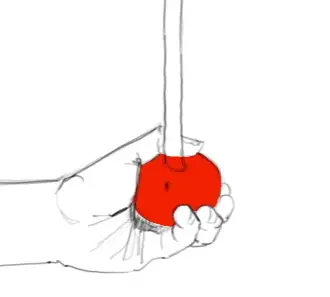THE AMAZING ENGINE
Stating that the heart is amazing can be an underestimation. The heart is pretty much the engine of the body. It has one job and does it exceptionally well; it pumps nutrients and oxygen to the body at an average of 2.5 fluid ounces per beat (in humans). That makes over 2000 gallons in a single day.

The strength of every beat the heart does is not a mild push, it is actually strong enough to shoot blood out of the aorta (about 1/4 inch diameter) at a 9 feet distance.
LIFE EXPECTANCY AND THE HEART
A hummingbird has a life expectancy of 6 to 7 years, while a Galapagos tortoise is expected to live around 160 years. The first has a resting heartbeat of 250 bpm, while the heart of the second one rests at 9 bpm…

…Perhaps, you have already done the math. In both cases, the number is approximately 800 million beats in a lifetime, and the same happens with every animal, except one: humans.
Humans have a life expectancy of approximately 2400 million heartbeats.
HUMBLE BUT MIGHTY
The average human heart weighs less than a pound and has four chambers and four valves. Despite its simplicity, its design is extraordinary. It delivers oxygenated blood to the body and pushes deoxygenated blood to the lungs to be oxygenated and then send it back to the rest of the body. It takes around 50 seconds for the circulatory system to complete one full cycle.
Two main events can jeopardize the function of the heart:
Heart attacks are caused by a blockage of the system. The disruption compromises the supply of oxygen to the heart, causing the death of its muscle tissue.
Humans, unlike some animals, can’t regenerate the muscle tissue.
Cardiac arrest occurs when the heart stops beating as a whole.
IMPROVING THE STRENGTH OF THE HEART
A healthy resting heart rate should be under 90 bpm.
Athletes have a lower rate than the average population (a condition known as bradycardia). Some examples are Usain Bolt (33bpm), and Bradley Wiggins (35bpm).
The heart is a muscle that can increase its strength and capacity with exercise. Going back to the example of the pump, imagine this time a pump a bit bigger than a tangerine, and more power to squeeze it every time. Naturally, it will require fewer beats to cover the demand for oxygen and nutrients of the body.
Regular and vigorous physical activity increases the strength of the heart, and consequently lower the resting heart rate.
CIRCLING BACK
The circulatory system performs a whole cycle every 50 seconds for as long as we live. The heart is the center of the circulatory system, but cannot operate appropriately without the arteries and veins.
There are a significant number of conditions that can affect the integrity of the whole system. The most common are high blood pressure and high LDL (Low-Density Lipoprotein, or “bad cholesterol”)
Back in the 1800’s and early 1900’s, high blood pressure was considered a sign of a strong (and healthy) heart. Franklin Roosevelt’s blood pressure measured 300/190 not long before his death. Knowing what we know now, it comes to no surprise that he suffered from a fatal Intracerebral Hemorrhage on April 12th, 1945. That tragic event created awareness of the risks of hypertension nationwide.
Nowadays, people with blood pressure over 130/90 are considered hypertense. High blood pressure puts excessive tension on the walls of the veins and arteries, increasing the risk for their rupture. Some of the factors that contribute to increased blood pressure are obesity, smoking, a diet high in sodium, age, genetics, stress, kidney diseases, and thyroid conditions.
Making it simple: the tension on the walls of the arteries (blood pressure) increases either due to excess volume of blood, or a decreased elasticity of the walls. Agents like sodium allow for the blood to retain more water (increasing the volume), while factors like smoking affect the composition of the walls, decreasing their elasticity.
LDL leaves a trace of poorly processed fats that builds up inside the arteries. Those build ups restrict the flow and increase the chances of a heart attack due to a blockage. The higher the LDL, the higher the odds for obstruction and, consequently, a heart attack.
MEDICAL ADVANCES AND HEALTHY LIVING
The 20th century should be known as the century of the heart. The medicine went from barely being able to touch a beating heart, to operating on it routinely. Medicine has come a very long way in lowering the number of heart-related deaths, but it’s still far from ideal. It is also crucial to note that the scientific advances in medicine are just a slight portion of the whole equation; a healthy lifestyle is the most significant contributor to prevent heart problems.
RECOMMENDATIONS
There are some simple recommendations provided by the American Heart Association. Anyone can follow them to improve the health of their hearts:
-Burn as many calories as you consume
-Eat a variety of nutritious food from every group.
-Avoid eating food with low nutritional value
-Live a tobacco-free life
CREDIT: The Body: a Guide for Occupants, by Bill Bryson
